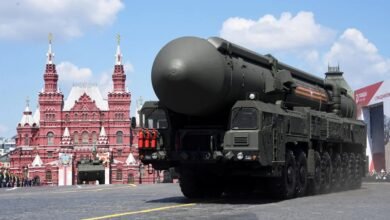
Understanding the U.S. Presidential Election Process: From Polling to Inauguration
The U.S. presidential election is a complex process that unfolds over nearly two years, culminating in the president’s inauguration on January 20 following the election. This article provides a detailed overview of how elections are conducted in the United States, from the initial polling to the final counting by Congress and the subsequent inauguration of the president-elect.
The Election Cycle
The presidential election cycle is structured as follows:
| Time Frame | Event |
|---|---|
| Spring of the year before an election | Candidates register with the Federal Election Commission (FEC) and announce their intentions to run. |
| January to June of election year | Presidential primaries and caucuses are held across states. |
| July to early September | Political parties hold national conventions to nominate their candidates. |
| September to October | Electors meet in their respective states to vote for president and vice president. |
| Early November | Election Day occurs on the first Tuesday after the first Monday in November. |
| December | Electors meet in their respective states to cast votes for president and vice president. |
| Early January | Congress counts electoral votes in a joint session. |
| January 20 | Presidential Inauguration Day marks the official start of the new administration. |
Candidate Registration and Primaries
Candidates typically announce their candidacy in the spring of the year before an election, followed by registering with the FEC. The primary elections and caucuses, which occur from January to June, are crucial as they determine each party’s nominee. Primaries are state-run elections where voters select delegates for their party’s national convention, while caucuses are local gatherings where party members discuss and vote for candidates.
National Conventions
In July or August, each political party holds a national convention where delegates officially nominate their chosen candidate for president and vice president. This event is significant as it solidifies party unity and sets the stage for the general election campaign.
General Election Voting
On Election Day, voters cast their ballots not directly for presidential candidates but for electors pledged to those candidates through a system known as the Electoral College. Each state has a number of electors based on its congressional representation (totaling 538 electors). A candidate must receive a majority of these electoral votes—at least 270—to win the presidency.
Voting Methods
Voting can occur through various methods:
- In-person voting on Election Day.
- Early voting, which allows voters to cast ballots before Election Day.
- Mail-in ballots, which have gained popularity, especially during recent elections.
Each state’s voting process may vary, including how ballots are counted and verified.
Electoral College Process
After votes are cast, each state’s electors meet in December to officially vote for president and vice president. These results are then certified by each state’s governor and sent to Congress. The Electoral College system means that most states use a winner-takes-all approach, where the candidate receiving the majority of votes in that state gets all its electoral votes (with exceptions in Maine and Nebraska).
Counting Electoral Votes
On January 6, Congress meets in a joint session presided over by the Vice President to count the electoral votes. This session is largely ceremonial; however, it can become contentious if there are objections or disputes regarding any state’s results. If no candidate receives 270 electoral votes, the election is decided by the House of Representatives for president and by the Senate for vice president.
Inauguration Day
The culmination of this extensive process occurs on January 20, known as Inauguration Day. The president-elect takes an oath of office administered by the Chief Justice of the United States at a ceremony typically held at the U.S. Capitol. This event marks the official start of their term. The inauguration includes various traditions such as parades and public celebrations.
Conclusion
The U.S. presidential election process is designed to reflect both democratic principles and federalism through its decentralized structure involving state-specific laws and practices. Understanding this process is essential for citizens engaged in their democracy, ensuring they participate fully from primaries through to voting and beyond into governance. This comprehensive overview highlights not just how elections are conducted but also underscores their significance in shaping American leadership and policy direction for years to come.
For more Breaking news and updates, click here.
Connect with us on X/Twitter here.



